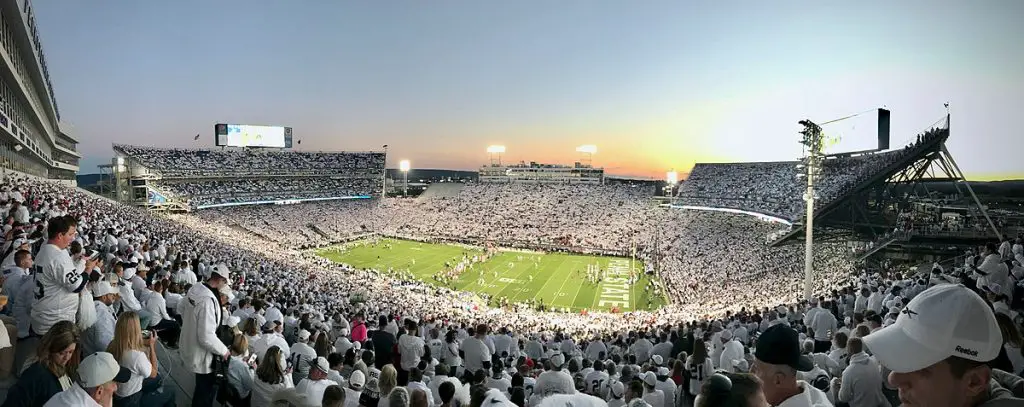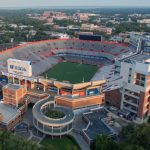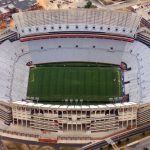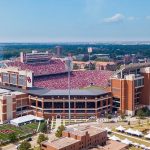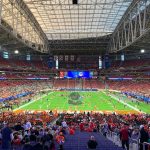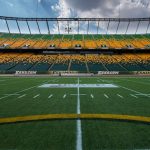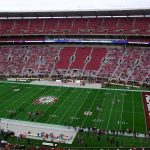One of the biggest stadiums in the world can be found in State College, Pennsylvania.
In this post, you’ll discover the ultimate list of Beaver Stadium history facts, a facility that became one of the biggest stadiums in the US.
1. The original Penn State ground was extremely humble
The Pennsylvania State University was founded in 1855 as the Farmers’ High School of Pennsylvania. The first major building on the site was completed in the year 1867 and is referred to as the “Old Main.”
It didn’t look quite the same as it does right now because significant changes to the building were made around 1930. The area in front of the building still resembles the days of the 19th century.
This area, which was located right in front of the main class building at the time, was used by the Penn State sports teams. It didn’t have a stand so it’s not officially recognized as Penn State’s first ground, though.
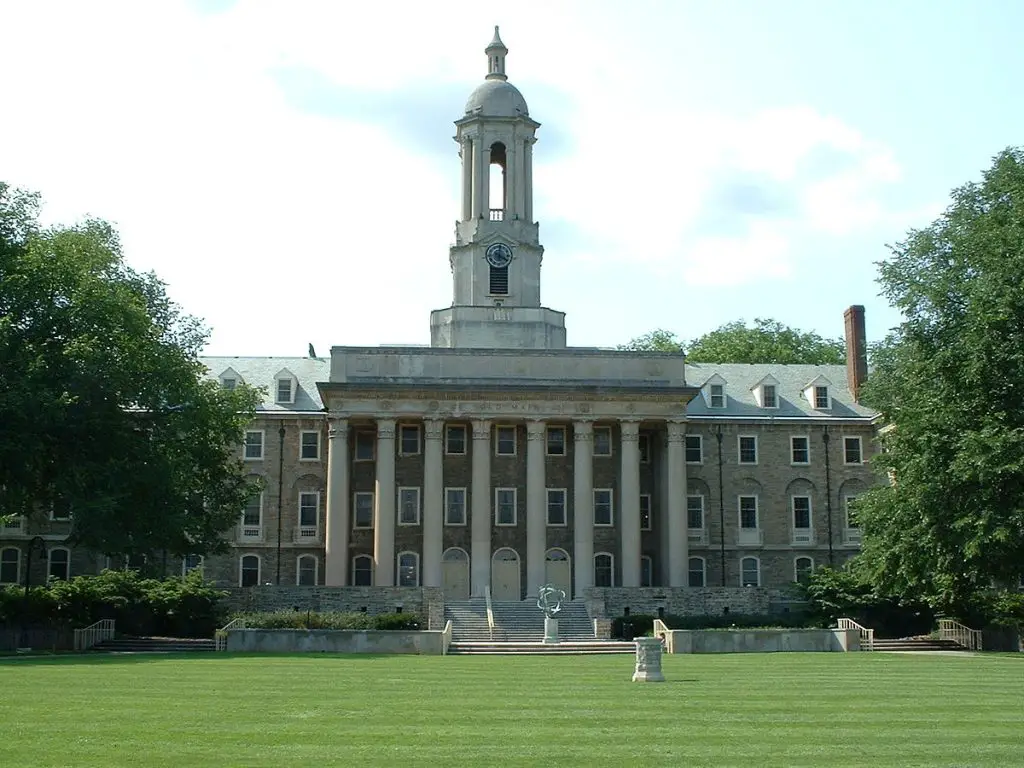
2. Penn State didn’t get their first real home until the 1890s
Because of the humble setting and the fact that sports became increasingly more popular and competitive in the latter half of the 19th century, the grass in front of the Old Main was exchanged for Penn State’s first real home ground.
This ground was named for James Beaver in June 1892, the Governor of Pennsylvania from 1887 until 1891, and a war hero who got wounded 4 times during the American Civil War.
In 1893, an area between present-day Osmond and Frear Laboratories which is now occupied by a parking lot was transformed into what we can refer to as a stadium.
The ground was initially called “Beaver Field” and is now being referred to as “Old Beaver.” The “grandstand” of this original stadium had a capacity of just 500 spectators, pretty humble beginnings indeed!
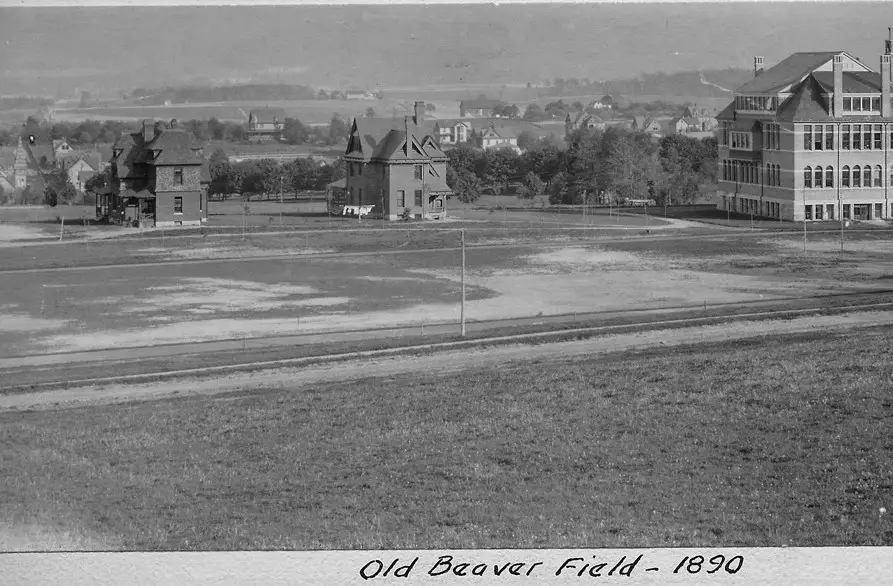
3. The first-ever game at their first home was won by Penn State
The first-ever game at Beaver Field was a game between Penn State and the Western University of Pennsylvania, now the University of Pittsburgh.
This historical game was played on November 6, 1893, and ended in a victory of 32-0 for Penn State!
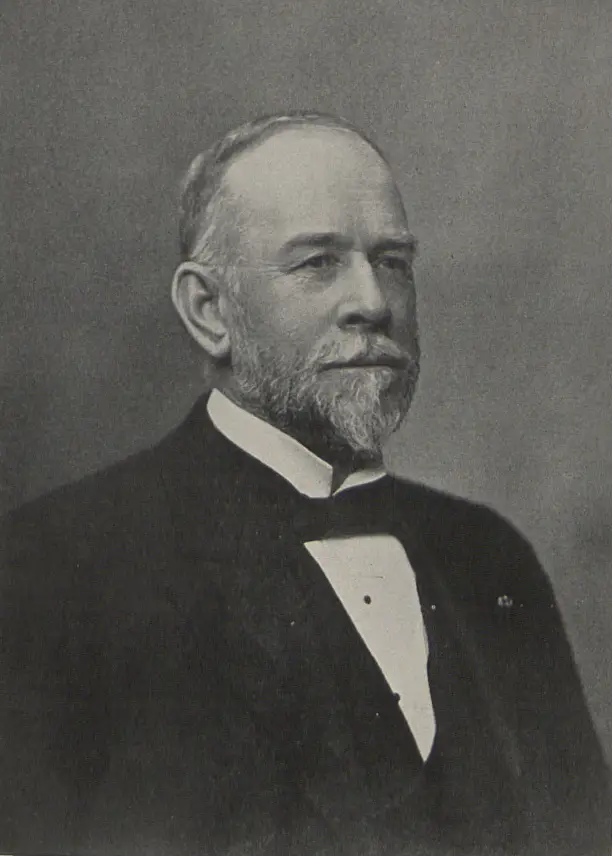
4. The third home of Penn State could seat 30,000 people
The first home of Penn State was used between 1893 and 1908 when the grounds were again moved. This stadium was built on the northeast side of Rec Hall, an area now occupied by the Nittany Lion Inn and the Nittany Parking Deck.
The original stadium was again rather humble and could seat a total of 1,200 people. Apart from the football field, there was also a track, lacrosse field, soccer field, and baseball field.
The construction cost was about USD 15,000, the equivalent of nearly half a million dollars today!
This stadium was expanded multiple times and went from a humble 1,200 seating capacity to a respectable 30,000 seats in the late 1950s.
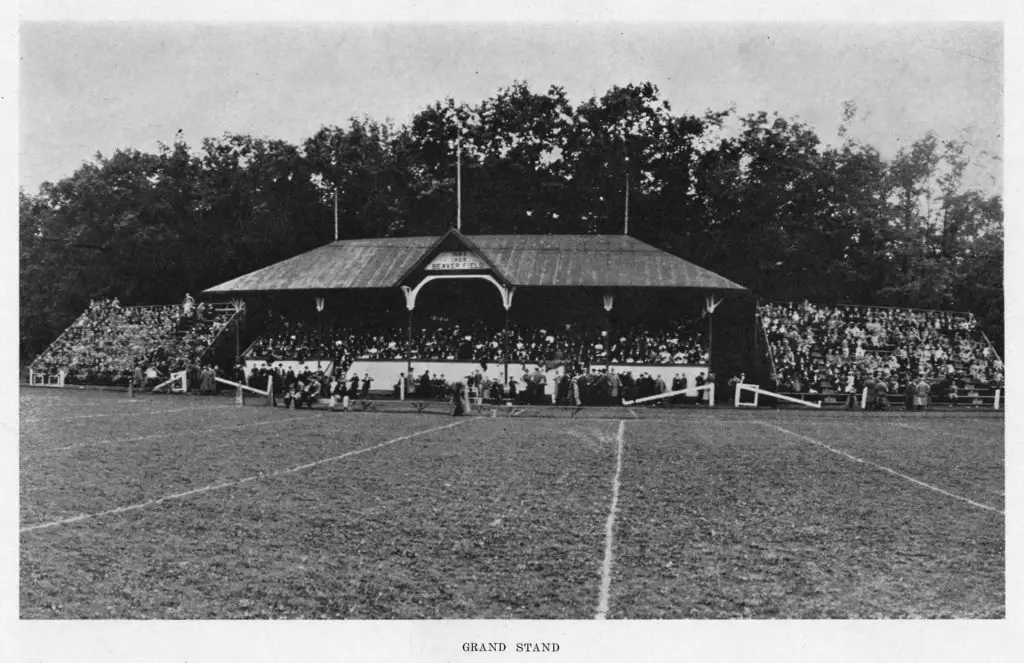
5. New Beaver Field was completely dismantled and rebuilt
The New Beaver Field, which could seat 30,000 people, was completely dismantled in the year 1959. It was rebuilt in the northeast corner of campus and renamed “Beaver Stadium.”
During this reconstruction, the capacity was also increased to 46,284 seats, which was still only the size of the lower half of the stadium today.
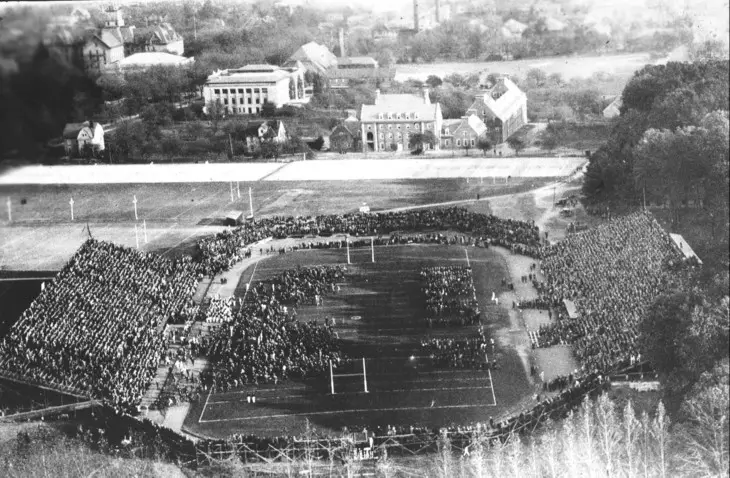
6. There have been 6 expansions in Beaver Stadium History
Starting with an expansion phase in the early 1970s which brought the capacity of Beaver Stadium to 57,538, the stadium has been expanded a total of 6 times. Here’s an overview of Beaver Stadium history facts regarding the expansions:
- 1972 – Capacity of 57,538
- 1976 – Capacity of 60,203
- 1978 – Capacity of 76,639
- 1980 – Capacity of 83,770
- 1991 – Capacity of 93,967
- 2001 – Capacity of 107,282
Back in 2011, the stadium capacity was slightly reduced and the total capacity of Beaver Stadium right now is 106,572. This makes it the second-biggest stadium in the United States after the Big House in Michigan.
It’s also the 4th largest stadium in the world after the Rungrado 1st of May Stadium in Pyongyang, North Korea, and the Motera Stadium in Ahmedabad, Gujarat, India.
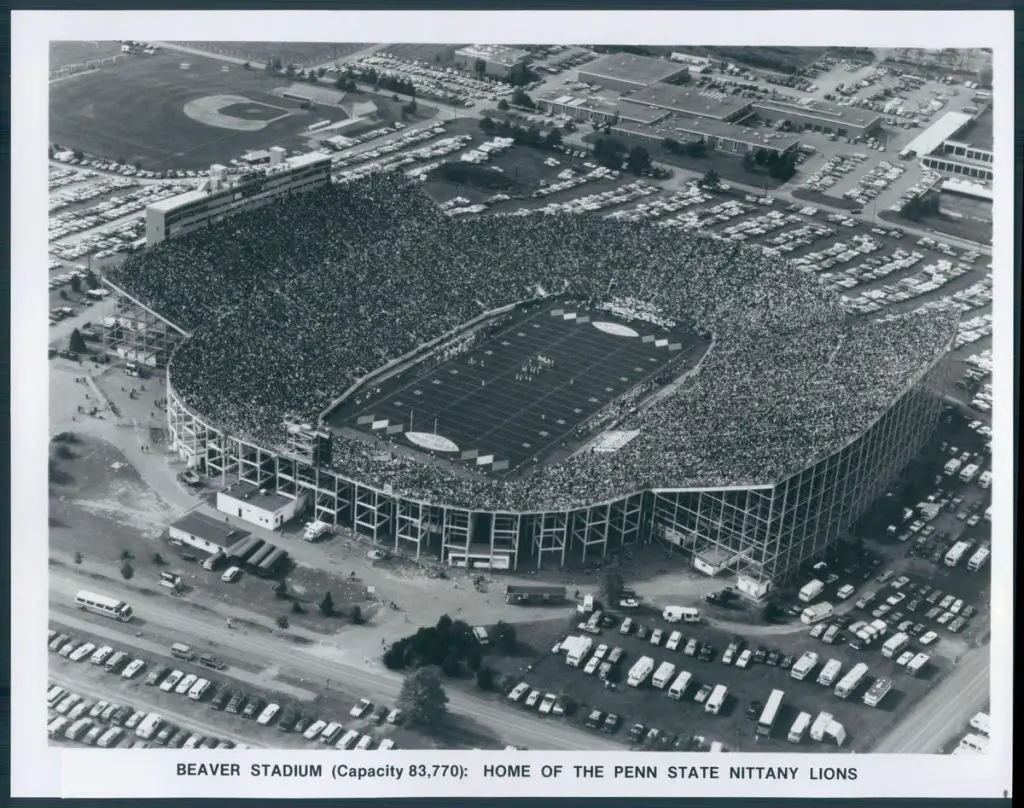
7. One expansion phase was rather controversial
The stadium that finally brought the capacity of over 100,000 spectators took place in the year 2001. This was extremely controversial because it blocked the view of Mount Nittany, a famous mountain in the area.
Seeing the mountain from the stadium had been part of the experience for fans since the stadium was constructed, but by adding a top tier to the south end of the stadium, this view was blocked.
Let’s just say that not everybody appreciated this “upgrade,” even though it meant that the stadium in Pennsylvania officially became the second-largest stadium in the United States after this.
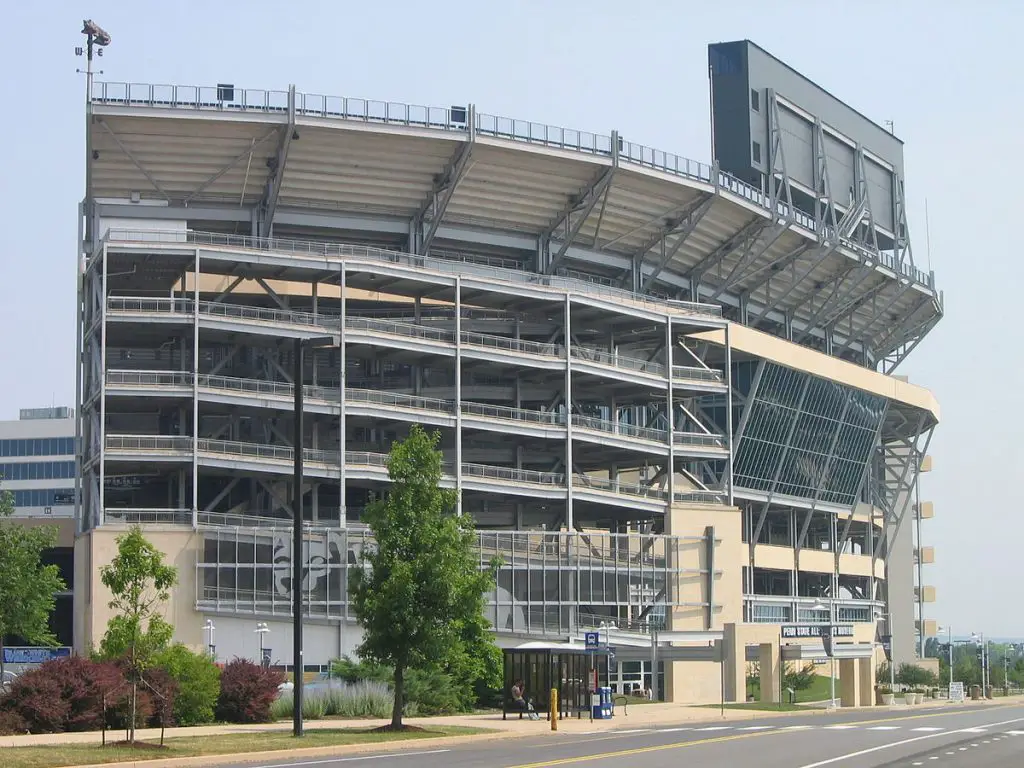
8. The record-attendance was over 110,000 during a game in 2018
The record attendance at Beaver Stadium was achieved on September 29, 2018. One of the most interesting Beaver Stadium History facts is that on this day, the stadium was filled with 110,889 enthusiastic football fans!
Unfortunately, it didn’t help to make Penn State win the game as they lost on that day with 27-26 against Ohio State. Regardless, this was an amazing moment for Penn State and its fans!
